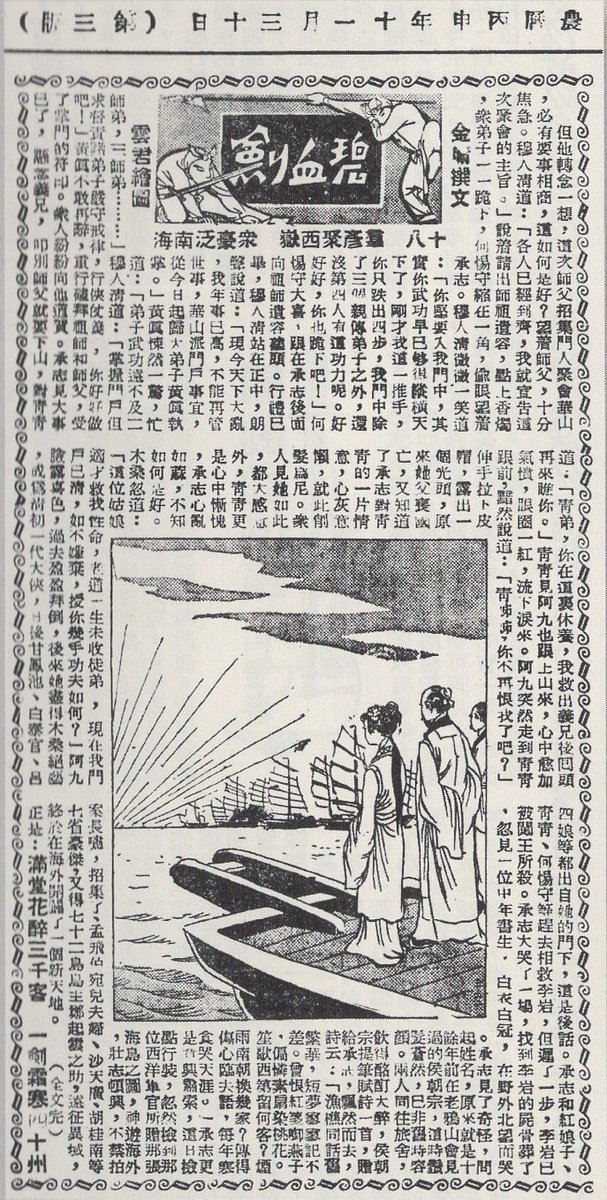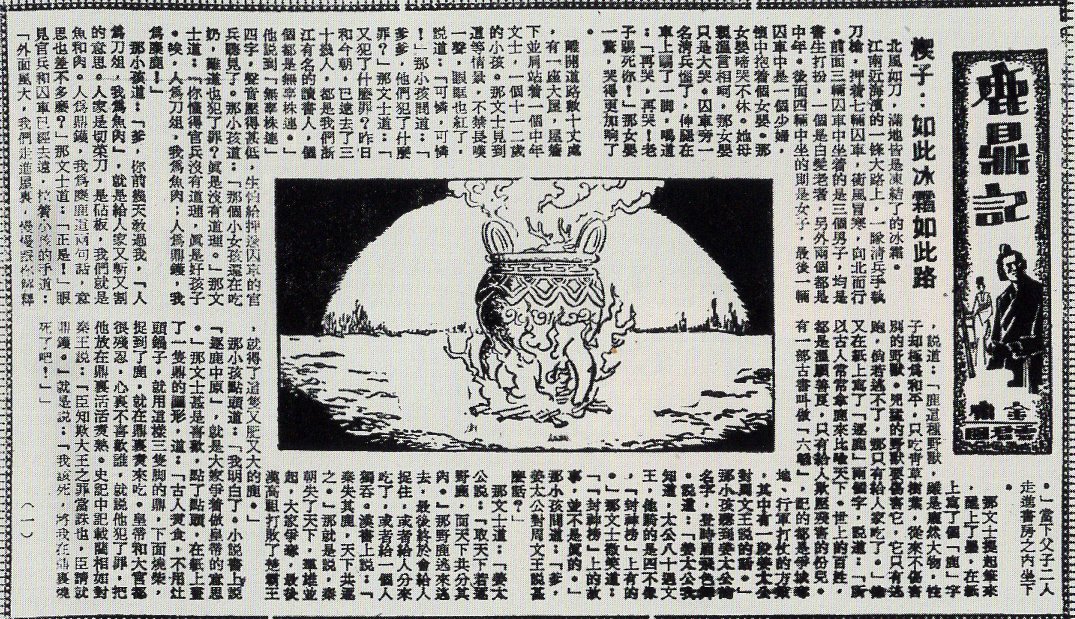
The 602nd installment of Smiling, Proud Wanderer. 1092 characters. So again, only ~1/3 of a modern webnovel chapter.
#wuxia #jinyong #webnovel #武俠 #金庸
#wuxia #jinyong #webnovel #武俠 #金庸

The last installment of Sword Stained with Royal Blood, Dec. 31, 1956. 914 Chinese characters. So LOCH began the very next day after "Royal Blood" finished. No rest period.
#wuxia #jinyong #webnovel #武俠 #金庸
#wuxia #jinyong #webnovel #武俠 #金庸

• • •
Missing some Tweet in this thread? You can try to
force a refresh











